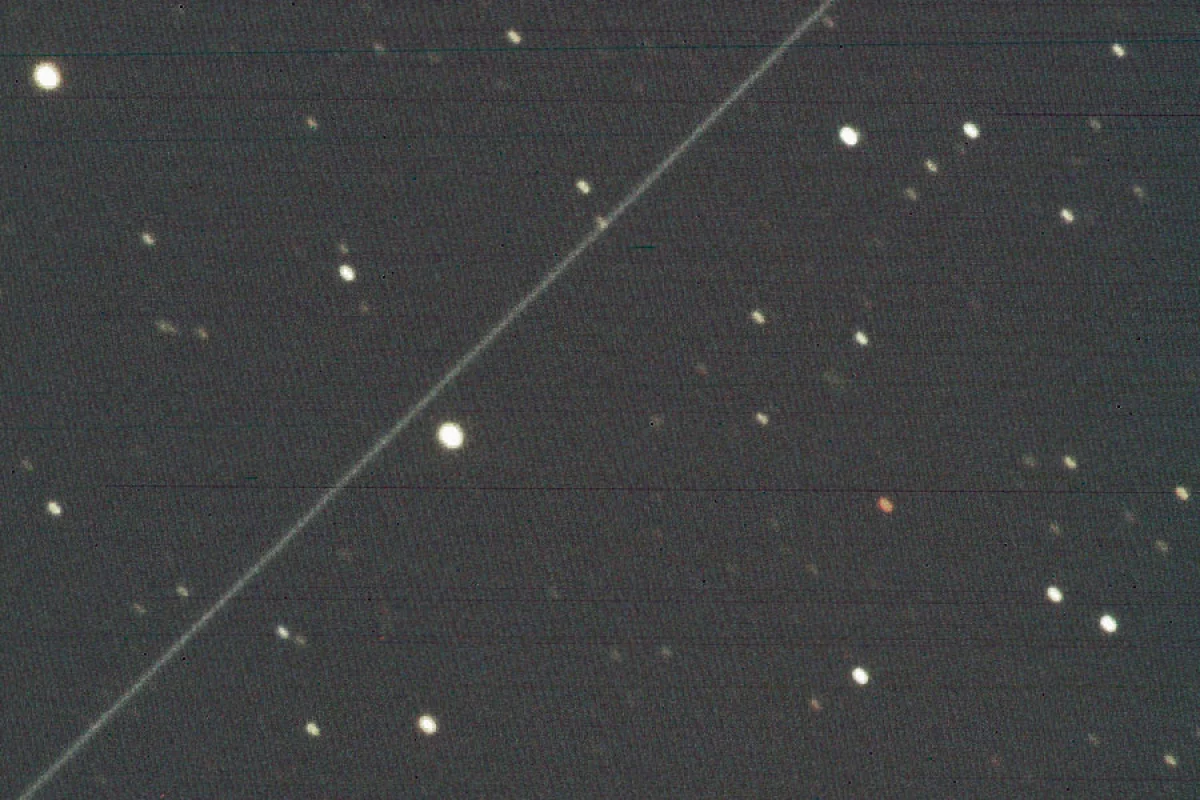By applying a dark coating to one of its Starlink satellites, SpaceX has been able to cut its satellite’s apparent brightness in half, according to the results of a new study. The research suggests that applying the coating to more satellites could help lessen their impact on delicate telescope observations of the night sky.
Since May 24, 2019, SpaceX has been launching satellites into orbit 60 at a time to bolster the ranks of its Starlink megaconstellation – a fleet of networked sats flying in formation that, once completed, will be thousands strong, and capable of providing global communications coverage.
Whilst such a service has the capacity to improve the lives of untold thousands of people living in the most remote, or disconnected places on Earth, it also has some substantial drawbacks.
One of the key issues is that, just after dusk and before the dawn, satellites reflect a significant amount of light back towards Earth. This is why we see them twinkling as they pass overhead on a clear night.
According to a 2020 study, the addition of megaconstellation swarms could mean that twice as many satellites will become visible to the naked eye in the coming years. Another undesirable side effect is that many of these bright artificial objects will inevitably wander through the gaze of sensitive ground-based telescopes, compromising the quality of their data.
SpaceX has trialed a number of mitigation strategies to try and reduce the apparent brightness of its satellites, and so lessen their negative impact on the astronomy community.
One of the most promising strategies involved launching a prototype Starlink satellite into space that had been treated with an anti-reflective coating. The results of a new study, making use of Japan’s Murikabushi Telescope at Ishigakijima Astronomical Observatory, suggests that the mitigation attempt has borne fruit.
On April 10th and May 18th, the 105-cm (41-inch) telescope observed the darkened SpaceX satellite, known as Starlink-1130 or Darksat, and captured data on its reflectivity in three different wavelengths of light simultaneously. The telescope also observed the light signature of a standard Starlink satellite in order to better understand how the mitigation tactic had reduced its brightness compared to the rest of the swarm.
After comparing the light signatures of the two probes, it was discovered that the albedo, or apparent brightness of Darksat, was roughly half that of the regular Starlink satellite. The results of the study show that mitigation strategies can have a significant effect on the disruptive nature of satellite constellations, however, the dark coat of paint is far from a panacea.
As it stands, the Starlink constellation is made up of hundreds of satellites, but upon completion, it will be comprised of a staggering 42,000 units flying in choreographed unison. Furthermore, whilst SpaceX currently has the largest megaconstellation, it is not the only company looking to put a host of satellites in the night sky. The results of the new observations are a comforting first step in creating a situation wherein astronomy and commercial satellites can exist in harmony, but there is much work left to be done.
Thankfully, other mitigation strategies are also being considered, including the potential of fitting future satellites with sun visors designed to block sunlight from striking the reflective areas of Starlink probes, and altering their orientation soon after launch to make their solar panels less visible.
A paper on the study has been published in The Astrophysical Journal.




